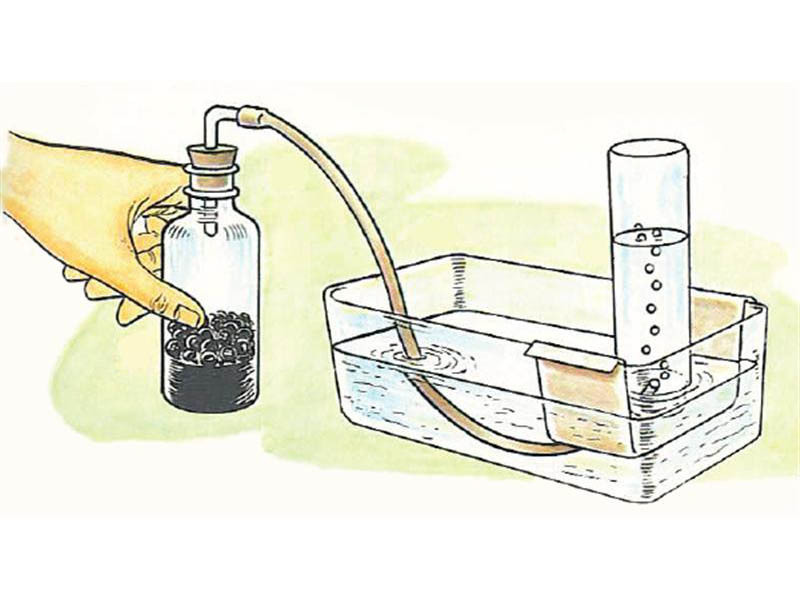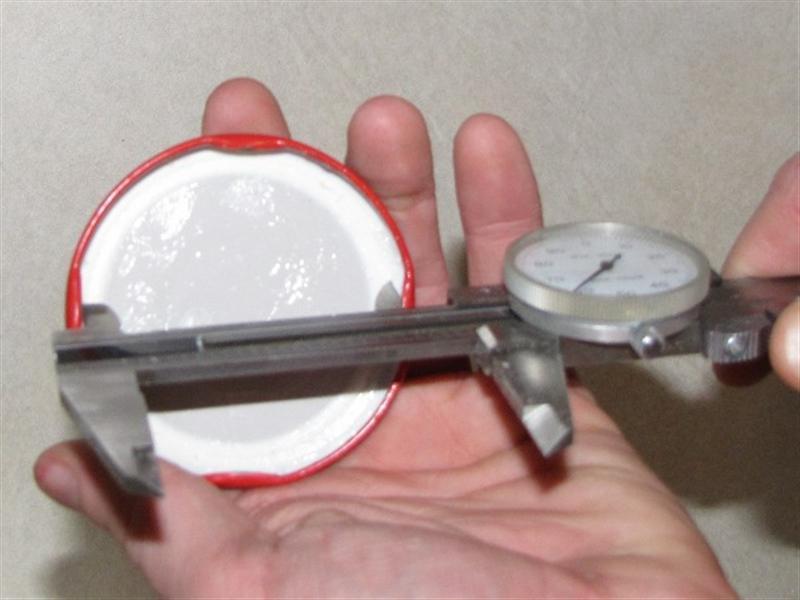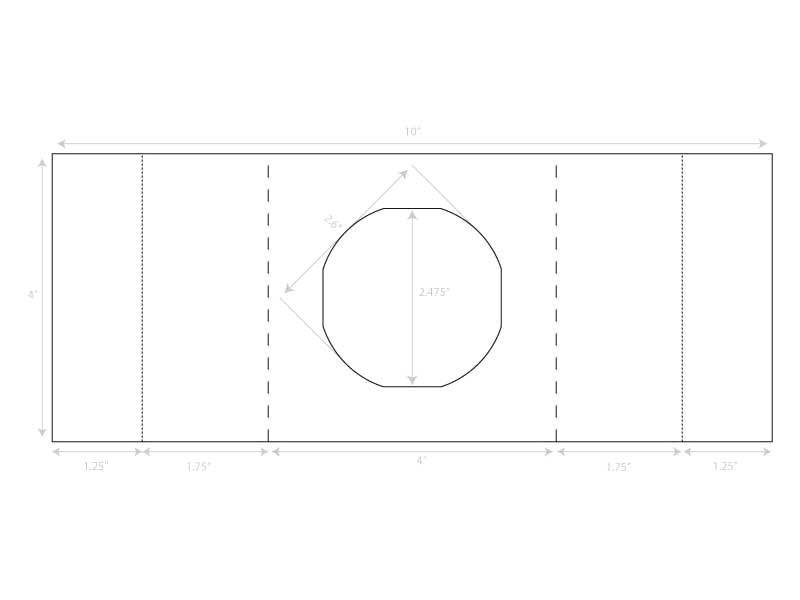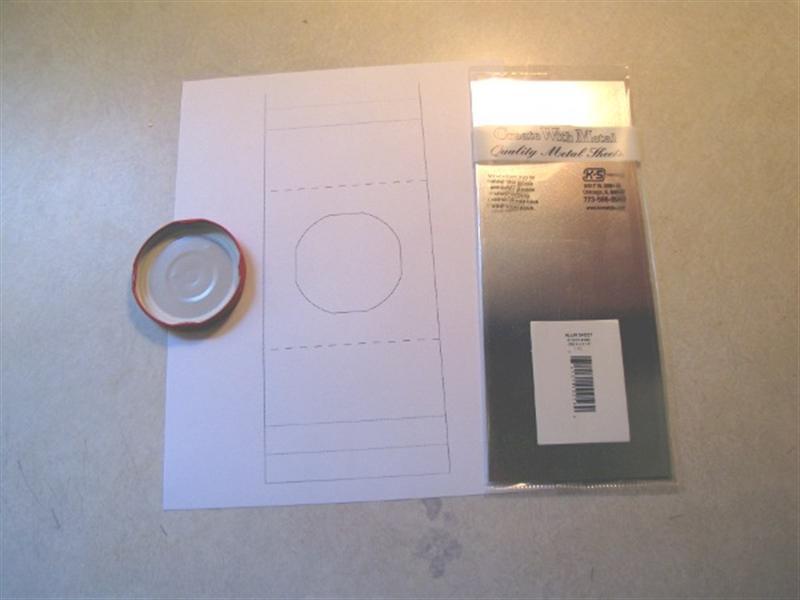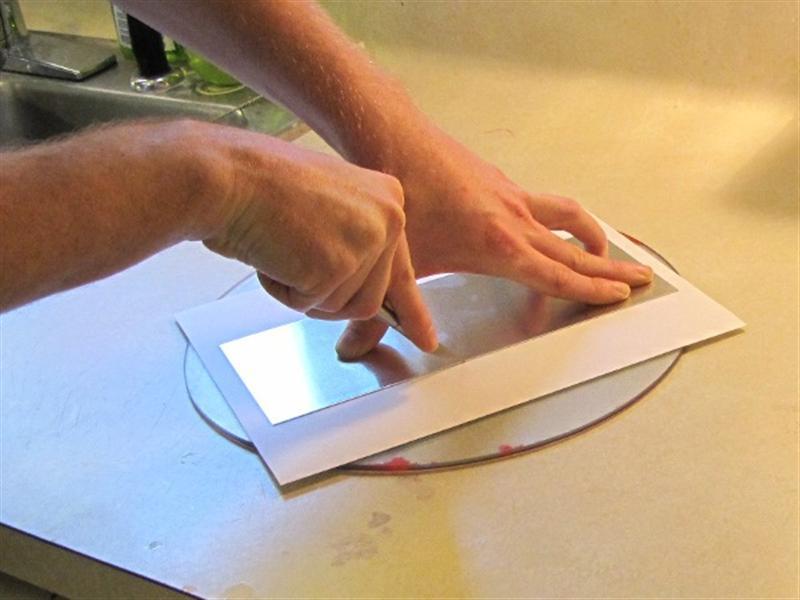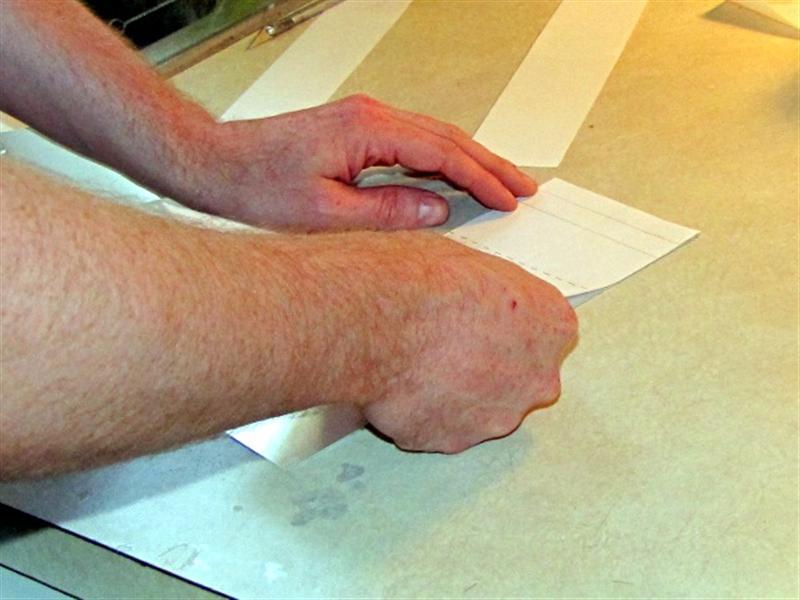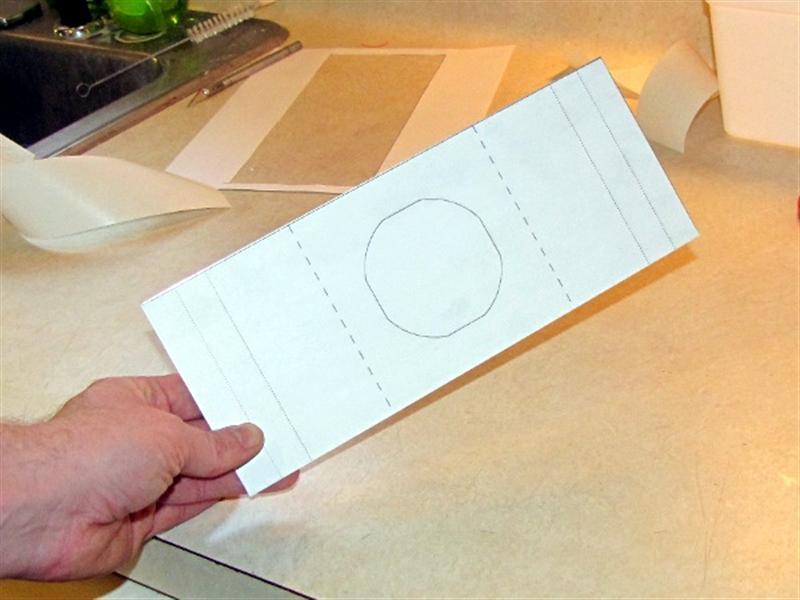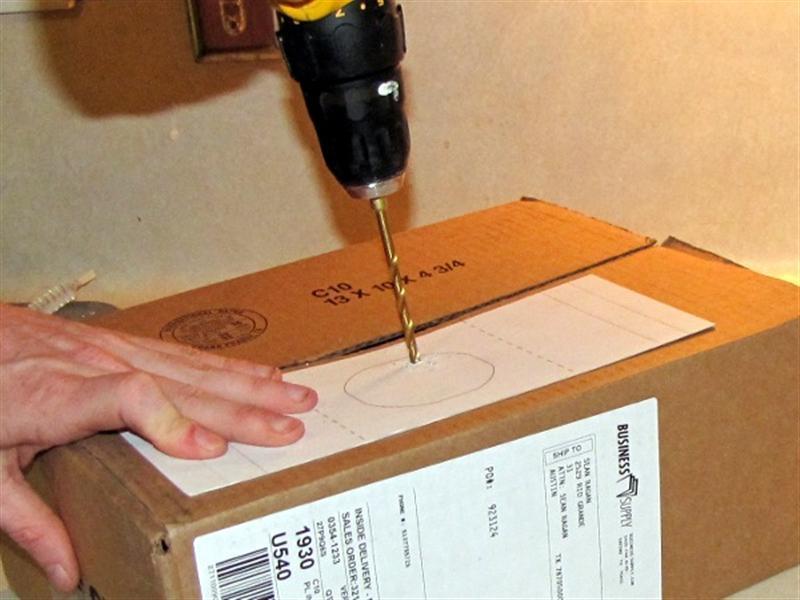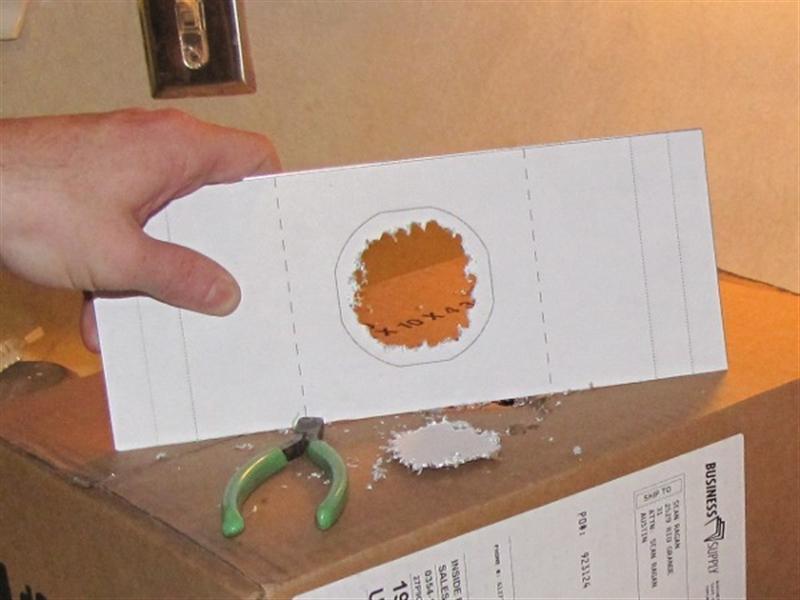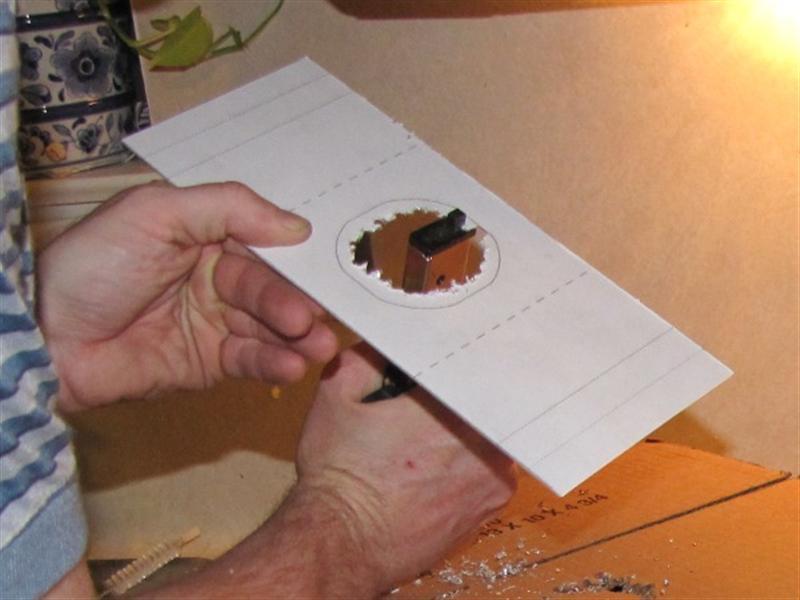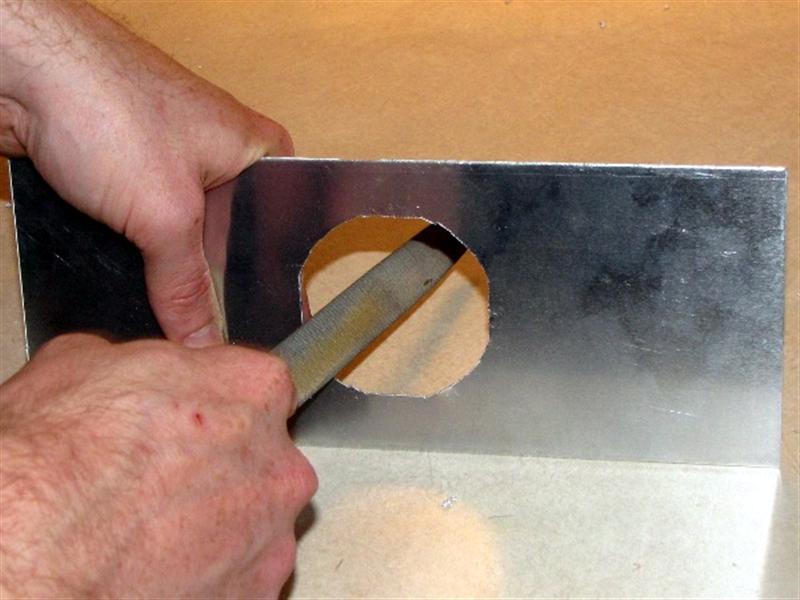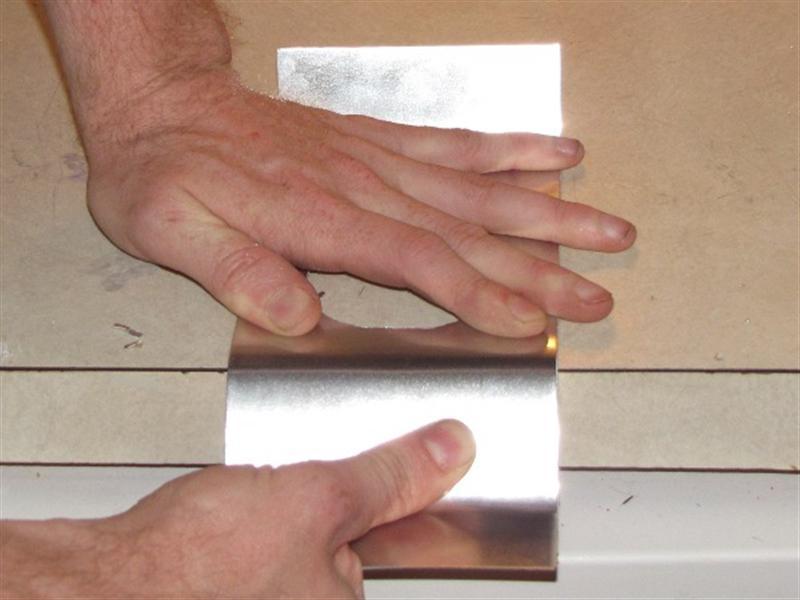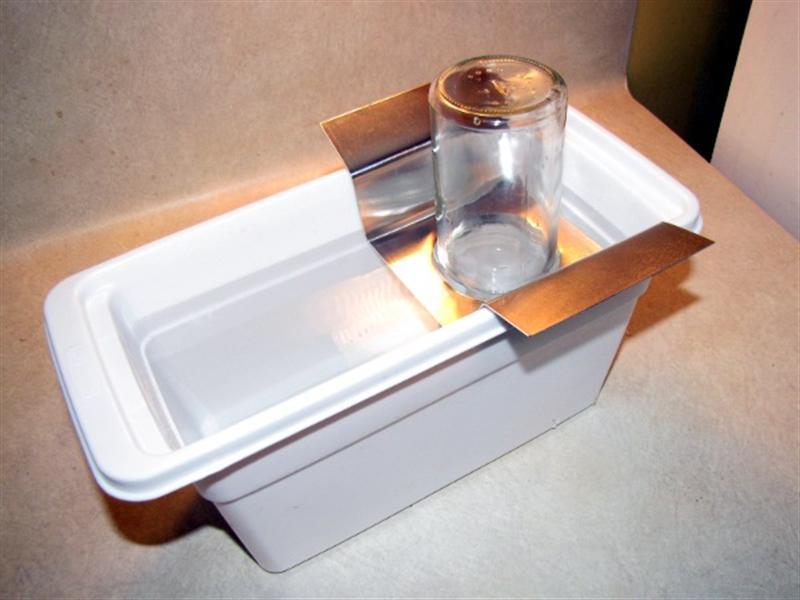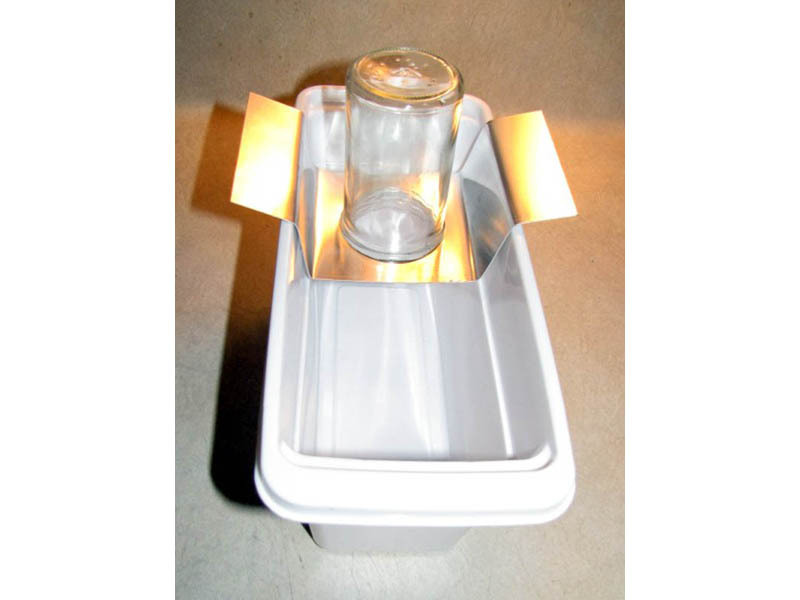Although it sounds like some kind of euphemism from Brave New World, a “pneumatic trough” is actually a very handy piece of classic chemistry lab kit. Besides providing a convenient means to collect samples of pure gases for various experiments, a pneumatic trough with a graduated container allows the easy volumetric measurement of reaction yields for gas-producing reactions.
If that all sounds too complicated, don’t sweat. What I’m going to show in this tutorial is just how to build a simple apparatus that allows you to collect pure gas samples over water. You can collect carbon dioxide, oxygen, hydrogen–almost any gas you can generate and direct down a hose.
It seems like a simple enough bit of equipment: all you need is an upside down container suspended in a bucket of water. Finding a convenient way to set that up, however, is tougher than it sounds. The pneumatic trough presented here, which uses a sheet metal “bridge” to secure the glass column, is by far the most painless and economical way to make it work that I have found. The basic idea is derived from illustrations in Robert Brent’s 1960 Golden Book of Chemistry Experiments (from which the title diagram is taken), but the addition of an aperture shaped to accept the threads of a glass jar is of my own devising.



